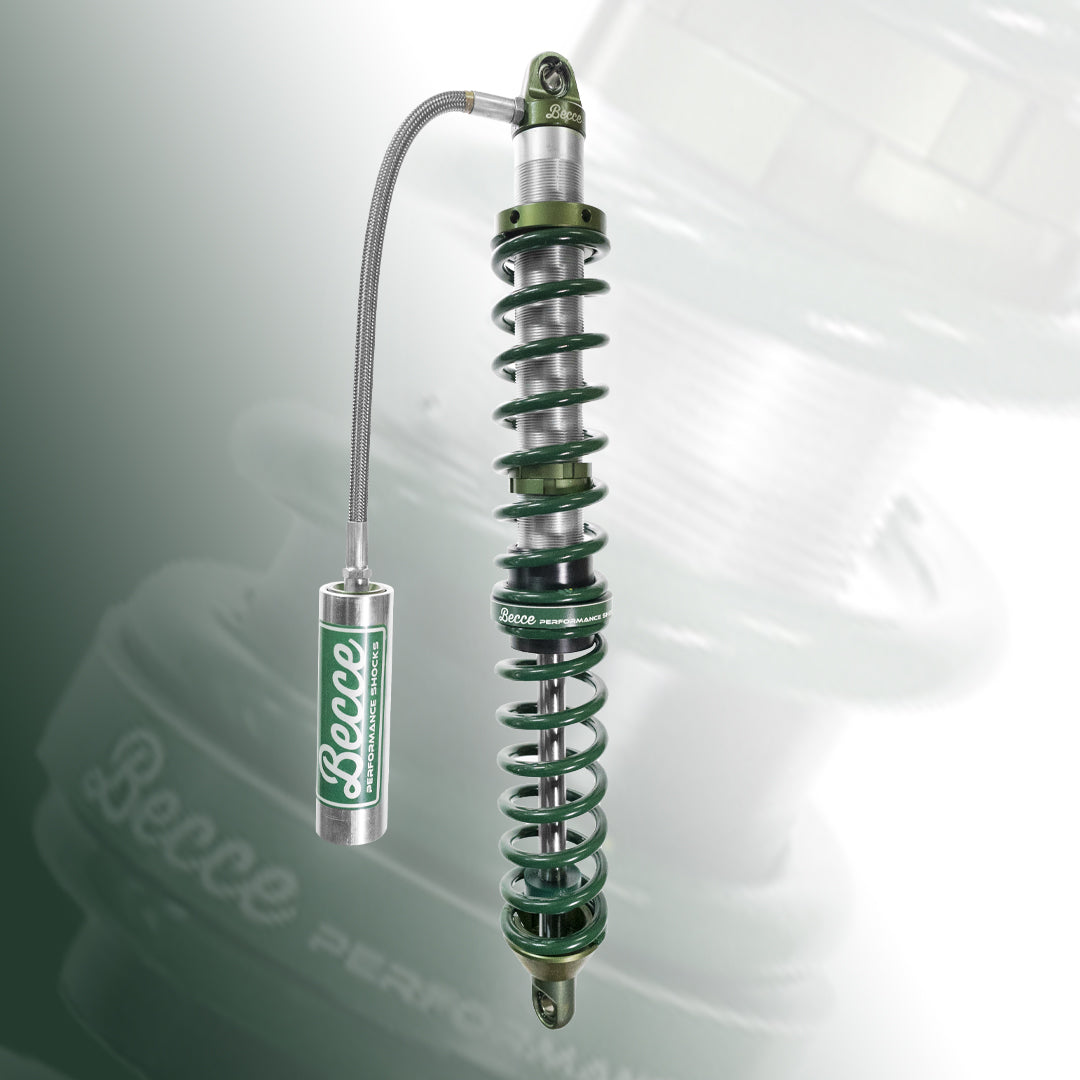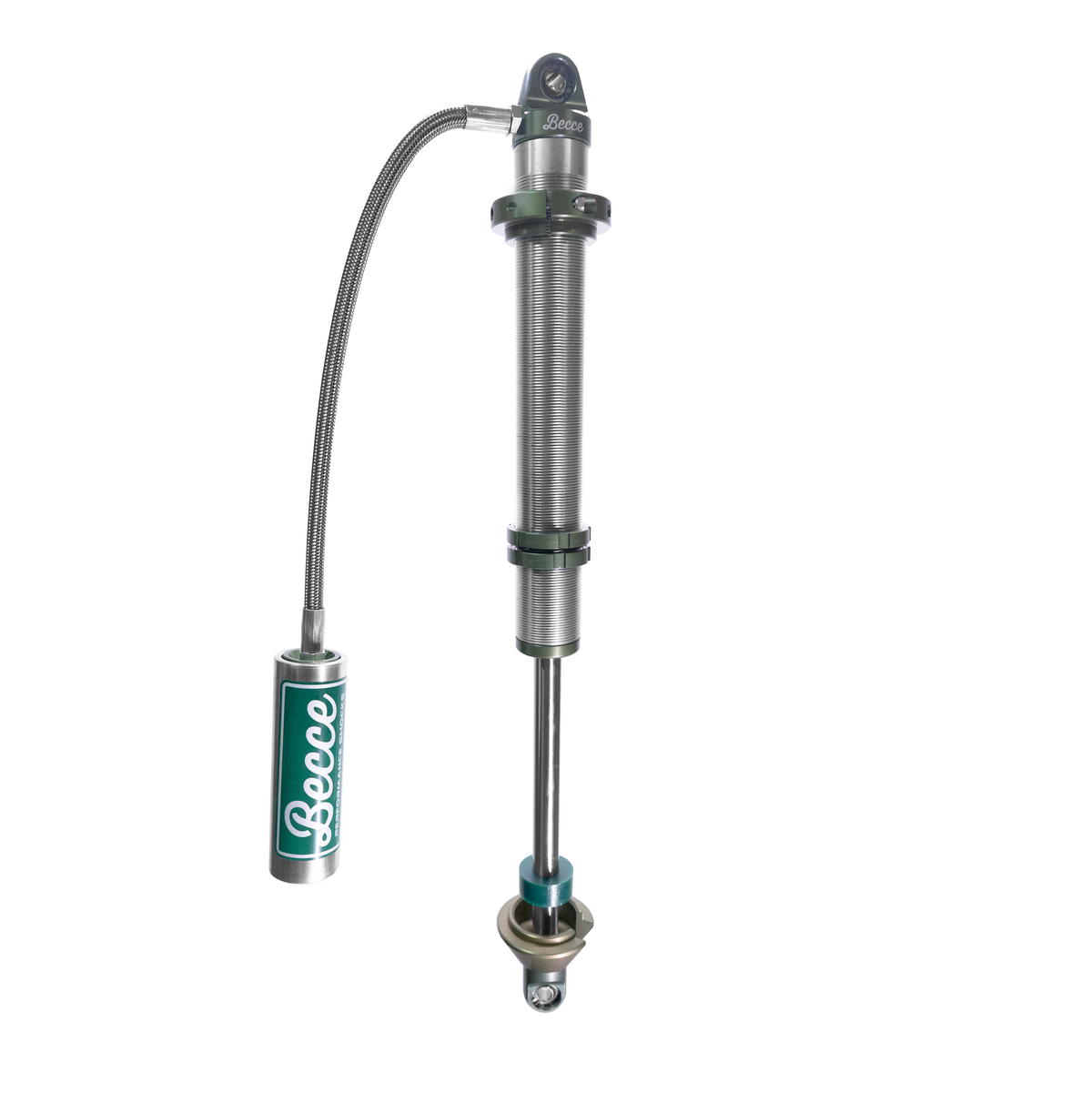Coilover shocks are available in many different brands, sizes, and configurations, but installation and adjustment are the same for all coilovers, and this guide will guide you through the process.
Coilovers are shipped in several different configurations. They are delivered pressurized (fully extended) or unpressurized (closed), and with springs installed or separate. The coilovers in the photo above are already nitrogen-charged and have both springs installed.
The first thing you should do after receiving your coilovers is to carefully inspect them, ensure they are the correct size, and, if necessary, verify which set is for the front and which is for the rear of the vehicle. Brands like King, Becce, and Fox specify their shock specifications on labels attached to the shock.
Step 1: Install the Springs and Adjust the Preload!
If your coilovers were shipped without springs, the first step is to add springs. To do this, fully extend the shock by pulling the shaft by hand. Next, if the lower spring plate came pre-attached to the lower rod end, lift it up and slide it out of the slot on the shaft. (Some shocks use different spring plate designs, but sliding them up always reveals the seating mechanism.) Install the first spring by sliding it down the shaft until it contacts the upper spring retainer (the coil adjuster/preload nut). Remember, the lower-speed and/or shorter spring is always installed first. On two-speed coilovers, the next piece is the slider, followed by the lower spring. On three-speed coilovers, the precision spring is installed on the top to be placed over the stop nuts during installation. Finally, install the lower spring plate by sliding it through the shock shaft and onto the lower rod end. Some coilover brands use slightly different designs, but this is the most common. Important: If your coilover has a rubber or foam buffer stop on the shaft, the lower spring plate should be placed under the buffer stop (between the buffer stop and the lower rod end). The lower spring plate should always fit directly and securely onto the coilover's lower rod end.
Step 2: Install Coilovers and Check Your Springs
Safety First! Installing coilovers for the first time can be dangerous, so be careful. This will require you to lift the vehicle high enough to be unstable, and it will also be the first time your upper and lower coilover mounts will be tested under the full weight of the vehicle. So, be sure to support the vehicle with jack stands, wear eye and ear protection, drive slowly, exercise caution, and use common sense. If you have any doubts, seek professional assistance with this process. Finally, be sure to use only Grade 8 or higher bolts, lock washers, and nuts.
Before installing your coilovers for the first time, it is highly recommended to perform a "dry install" (without springs installed, no pressure on the reservoirs) and fully cycle the suspension to check for play, compression, component contact, and verify full compression and full extension.
With the vehicle frame suspended and the suspension fully adjusted, install the coilovers using Grade 8 bolts, lock washers, and nuts. Check for play around the coilovers and then very slowly begin to lower the vehicle's weight onto them.
How to Add Preload to a Coilover
A photo showing how to use a cut screwdriver inserted into a coilover nut. To add preload to your coilover springs, remove all the weight from the springs by lifting the vehicle's frame and allowing the suspension to drop. Then, using a coilover nut adjustment tool (we prefer a screwdriver with a nice handle that we cut off), turn the upper coil adjustment nut to the desired distance. A lubricant like WD-40 is also recommended on the threads. If the coilover adjustment nut has a locking screw, be sure to loosen it before making any adjustments and tighten it when finished. After making the preload adjustments, gently lower the vehicle's weight back onto the coilovers. Hopefully, the vehicle has settled to your desired ride height. If not, repeat the above steps as necessary.
Important Note: Never adjust your preload based on the vehicle's weight on the coilovers; this can damage the coilover cylinder and/or coilover nut, which is both expensive and difficult to replace.
Pressure Your Coilovers
If your coilovers were shipped uncharged (collapsed) or if you drained them to simplify the installation process, it's time to pressurize the shock with nitrogen. While different performance shocks and coilovers recommend pressures between 100 and 250 PSI, we generally find 150 PSI to be a great place to start.
A photo of the nitrogen charging kit components, tank, hose, regulator, and tire mandrels.
Use Nitrogen, Not Compressed Air. The most common question we get about charging shocks is whether you should use shop air instead of nitrogen.
This information was prepared by Crawlpedia.



0 comments